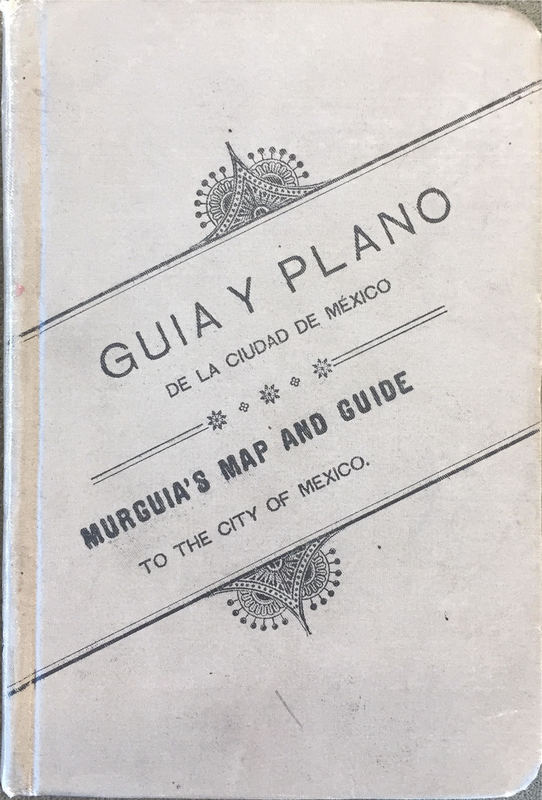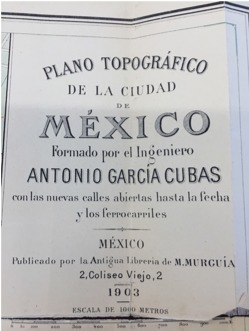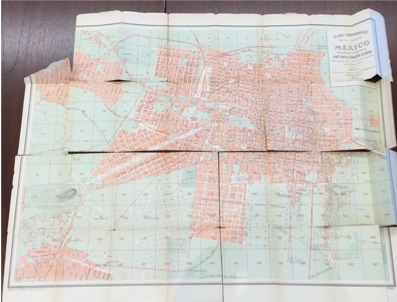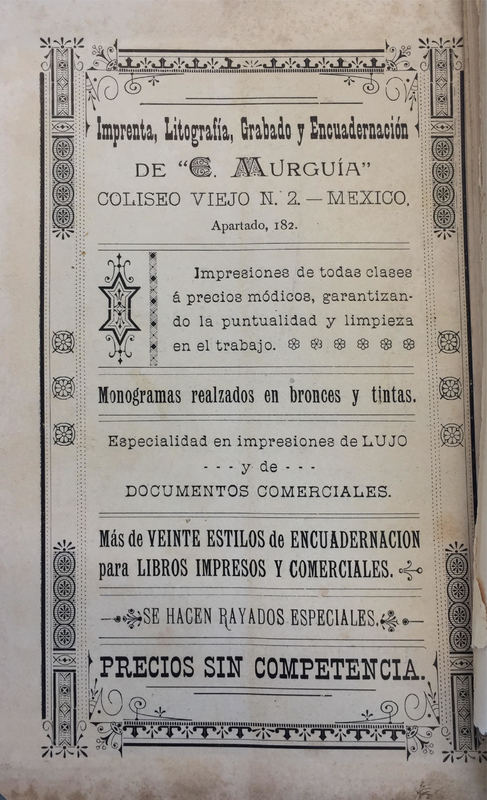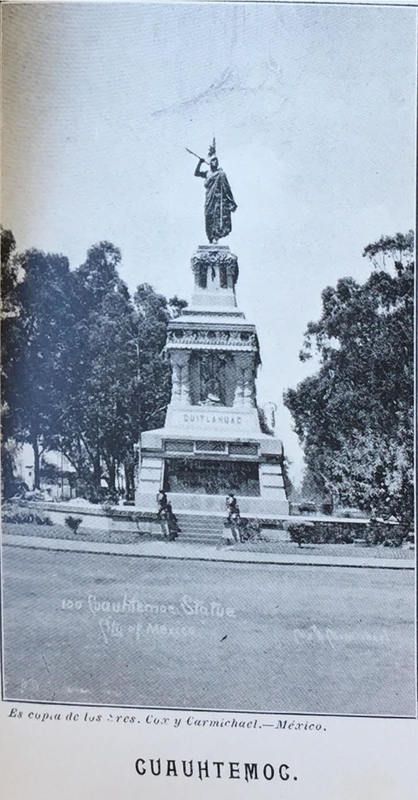Nueva guía manual de forasteros en la ciudad de méxico: escrita en castellano y en inglés y plano topográfico de esta capital
Guide books serve as important ambassadors, providing a first encounter with a country and offering information that persuades readers to travel there. Nueva Guía y Plano is a guidebook to Mexico City containing recommendations for travel plans, points of interest, and maps and practical background information on Mexican history and politics. Aimed at both English-speaking and Spanish-speaking audiences, Guia was written and published by editor Eduardo Murguia and writer/cartographer Antonio García Cubas.
The book is divided into Spanish and English sections to address these newcomers. The sections are nearly identical in content, but the English section is an interpretive translation of the Spanish section, not just a direct transliteration. Further subdivisions categorize this guidebook, which separates points of interest around the city by hotels, restaurants, and bars. A history section in both parts talks about the history of Mexico, and a topographical section describes the geography of Mexico City.
The book is divided into Spanish and English sections to address these newcomers. The sections are nearly identical in content, but the English section is an interpretive translation of the Spanish section, not just a direct transliteration. Further subdivisions categorize this guidebook, which separates points of interest around the city by hotels, restaurants, and bars. A history section in both parts talks about the history of Mexico, and a topographical section describes the geography of Mexico City.
Although the content of the text is identical, the accompanying photographs and lithographs vary. Each photograph occupies its own full page, one-sided printing that is smoother to the touch than the pages with text. Many photographs are of monuments and statues around the city, including a statue dedicated to Cuauhtémoc, the last Aztec emperor.
Compared to other travel narratives, the factual nature of this Guia is likely because a Mexican publishing company produced it. Guidebooks produced by the authors about their own country tare often more factual, because the editors know the most important information to represent themselves. Guidebooks written by foreigners on the other hand, tend to embellish what the author finds amusing and what they think would sell to audiences of their own culture. Self-representation in literature and guidebooks is necessary to establish national and regional identities in a global context.
- Safa Tinaztepe
Works Cited
Herrero, Pedro Pérez. "Algunas Hipótesis De Trabajo Sobre La Inmigración Española A México: Los Comerciantes." In Tres Aspectos De La Presencia Española En México Durante El Porfiriato: Relaciones Económicas, Comerciantes Y Población, edited by Lida Clara E., by Grijalva Manuel Miño, Herrero Pédro Pérez, and Jarquín María Teresa, 101-74. México, D. F.: Colegio De Mexico, 1981. doi:10.2307/j.ctv233mm2.7.
Vargas, Héctor Mendoza. Las guías urbanas: imagen e invención del espacio de la Ciudad de México. Investigaciones Geográicas, Boletín del Instituto de Geografía, UNAM. 18 de mayo de 2015.
Wilson, Robert Anderson. Mexico: Its Peasants and Its Priests: Or, Adventures and Historical Researches in Mexico and Its Silver Mines during Parts of the Years 1851-52-53-54, with an Expose of the Fabulous Characters of the Story of the Conquest of Mexico by Cortez. New York: Harper & Brothers, 1856.
